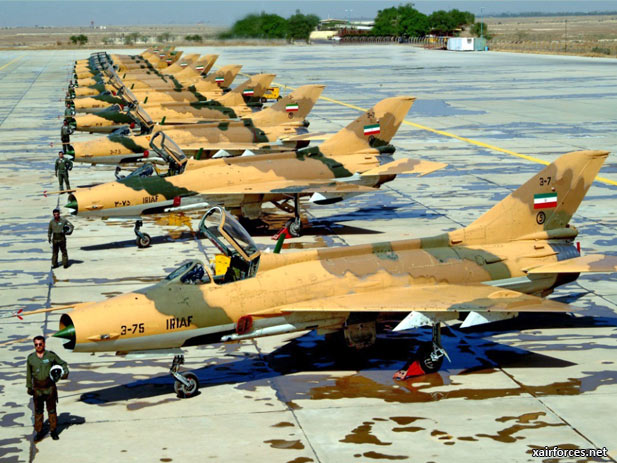
The Current Iranian Crisis Demonstrates Why a Two War Military is Important

Since the end of the Cold War, the basic metric for judging the adequacy of the U.S. military has been its ability to fight in two geographically separated regions of the world at approximately the same time.
Referred to at different times as Major Regional Contingencies (MRC), Major Theater Wars or multiple, large scale operations, the two war standard has stood the test of time because it reflects a basic strategic reality, one well expressed by the 2012 new Strategic Guidance for the Department of Defense: “As a nation with important interests in multiple regions, our forces must be capable of deterring and defeating aggression by an opportunistic adversary in one region even when our forces are committed to a large-scale operation elsewhere.”
Moreover, there have been times when the United States has found it prudent, even necessary to build up its forces in two different parts of the world in order to deter possible aggression. In 1994, the Clinton Administration faced a crisis on the Korean peninsula resulting from Pyongyang’s violation of its obligations under the Nuclear Non-Proliferation Treaty. In response to heightened tensions in Northeast Asia, the United States began to move additional forces to the region. At about the same time, Saddam Hussein, under U.N. sanctions and no-fly zones imposed since around the time of the 1991 Persian Gulf War, began to move portions of his army from central Iraq southward in what could have been preparations for another attack on Kuwait. Again the U.S. deployed an array of forces to that region. Then-Secretary of Defense William Perry later credited the maintenance of a two MRC military for Washington’s ability to deter conflict in both regions simultaneously.
Almost twenty years later, the United States may face a similar situation. As part of its new strategy, the Obama Administration announced a “strategic pivot” to the Asia Pacific region which would require the shifting of forces from other parts of the world to that region. China is pursuing a massive military buildup that includes the construction of aircraft carriers, stealth fighters and anti-ship ballistic missiles. Recently, Beijing has been using some of its newly-acquired military muscle to assert control over disputed portions of the South China Sea. The U.S. plans to balance China’s military buildup by deploying to the Pacific the first units equipped with advanced platforms and systems such as F-35 Joint Strike Fighter, P-8 and BAMS unmanned aerial vehicle.
At the same time as the “strategic pivot” is underway, the growing crisis with Iran over that country’s nuclear enrichment program has required the deployment of additional U.S. forces to the Persian Gulf. Over the past several months, the Pentagon has deployed to the region F-22 stealth fighters, minesweeping vessels and helicopters and an amphibious assault ship reconfigured as an "afloat forward staging base.” Most recently, the Navy announced the early deployment of the USS John C. Stennis aircraft carrier battle group (CVBG) to the Persian Gulf. The Stennis and its escorts only returned to its home port in Bremerton, Washington in March after a long Middle East deployment. The rapid turnaround of the Stennis CVBG comes at a high price, since its ships and planes will not receive all of the required maintenance and the crews will have had only a few months at home.
The truth is that while our defense policy has always advocated being able to fight two wars at the same time, successive administrations have never provided sufficient resources to ensure a force structure of the requisite size and capability to achieve such a goal except at extremely high risk. It was possible to get away with this little charade in the past because the U.S. military was relatively modern as a result of the Reagan buildup and our potential adversaries were rather weak. Neither of these conditions holds true today. Moreover, further defense budget cuts as a consequence of sequestration will require reductions in force structure and modernization programs that virtually guarantee the United States will no longer be able to deploy credible military forces to two regions at the same time. The new administration will face a difficult choice: increase defense spending to ensure that the military can support our national security strategy or turn one important region of the world over to the tender mercies of authoritarian and even fundamentalist theocratic states.
Source: Daniel Goure, Ph.D./ Early Warning Blog, Lexington Institute News - 13 August 2012
Photo: Iranian Air Force_Chengdu F-7M Airguard Interceptor Squadron (Photo by IIAF)
(13.08.2012)
|